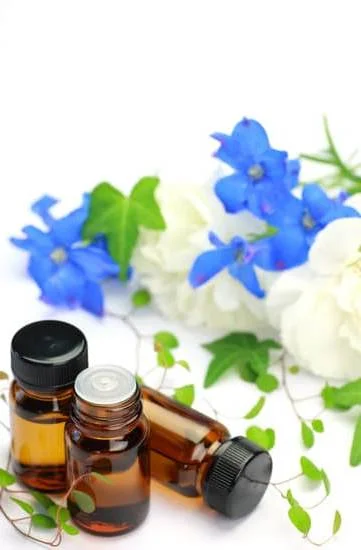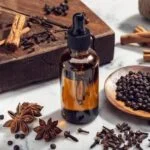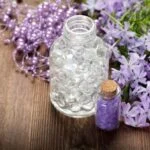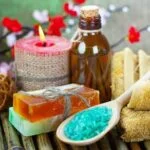Aromatherapy massage has become increasingly popular in the wellness industry due to its ability to provide relaxation, healing, and overall well-being. This article will explore what you can expect from an aromatherapy massage and how it can benefit you.
Aromatherapy massage combines the therapeutic touch of a traditional massage with the power of essential oils. These essential oils are derived from plants and have been used for centuries for their healing properties. When applied during a massage, they can enhance the benefits of relaxation and promote physical and emotional well-being.
During an aromatherapy massage, your qualified massage therapist will use a combination of techniques tailored to your specific needs and preferences. They will guide you through the entire process, ensuring your comfort and satisfaction. From selecting the right scent to creating a calm atmosphere at home before your appointment, there are steps you can take to prepare for the ultimate aromatherapy experience.
In this article, we will delve into the magic of aromatherapy and how essential oils contribute to its effectiveness. We will also introduce you to your massage therapist who specializes in aromatherapy techniques and discuss what happens during a session. Additionally, we will explore the benefits of aromatherapy massage, provide a guide on popular essential oils used in this practice, and share tips on aftercare and self-care.
By the end of this article, you will have a comprehensive understanding of what an aromatherapy massage entails and how it can positively impact your physical and mental well-being. Whether you’re seeking stress relief or pain reduction, an aromatherapy massage may be just what you need for a rejuvenating experience.
The Magic of Aromatherapy
Aromatherapy has long been recognized for its therapeutic benefits, and when combined with massage, it creates a truly magical experience. At the heart of this enchantment are essential oils – concentrated plant extracts that have been used for centuries to promote relaxation, healing, and overall well-being.
The power of essential oils lies in their ability to engage our sense of smell, as well as penetrate the skin and enter the bloodstream through massage. Each essential oil possesses its own unique properties and aromas, allowing them to target specific physical and emotional concerns. For example, lavender oil is known for its calming effects on the nervous system, while peppermint oil can refresh and invigorate the mind.
During an aromatherapy massage, the therapist will carefully select essential oils based on your individual needs and preferences. They may blend different oils together to create a customized experience that caters to your specific goals, whether it’s stress reduction, pain relief, or simply enhancing relaxation. The scent of these essential oils will fill the air around you as they are diffused or applied directly to your skin through gentle massage strokes.
As the aromatic molecules of the essential oils enter your body through inhalation or absorption into the skin, they stimulate various receptors in your brain and produce a range of physiological responses. These responses can include deep relaxation by slowing down heart rate and reducing blood pressure, pain relief by reducing inflammation markers in the body, improved sleep by promoting relaxation before bed, and mood enhancement by triggering release of feel-good chemicals in the brain.
The combination of touch from massage and scent from essential oils heightens the overall sensory experience during an aromatherapy massage. Not only does it allow you to unwind physically but also helps to calm your mind and emotions. This combination results in a truly rejuvenating treatment that promotes overall well-being on multiple levels – leaving you feeling nurtured and revitalized.
Preparing for the Ultimate Aromatherapy Experience
Before embarking on an aromatherapy massage experience, it is important to take certain steps to ensure you get the most out of your session. One of the key considerations is choosing the right scent or essential oil that resonates with you and addresses your specific needs. Essential oils have different properties that can promote relaxation, boost energy, or alleviate certain health conditions. Take some time to research and discover which scents align with your desired outcome.
Creating a calm and soothing atmosphere at home before your appointment also plays a vital role in enhancing your overall experience. Consider dimming the lights, lighting candles, and playing soft music to set the mood. Make sure your space is clean and clutter-free so that you can fully immerse yourself in relaxation. If possible, turn off any distractions such as phones or televisions to create a serene ambiance.
In addition to setting the physical environment, it is equally important to mentally prepare yourself for an aromatherapy massage. Take a few moments before your appointment to clear your mind and focus on being present in the moment. Deep breathing exercises or meditative practices can help quiet racing thoughts and center yourself for maximum relaxation during the session.
By taking these steps beforehand – choosing the right scent, creating a calm atmosphere at home, and mentally preparing yourself – you can ensure that you are ready for an ultimate aromatherapy experience. This preparation will help set the stage for relaxation and optimal results from your massage session.
Meet Your Massage Therapist
When you go for an aromatherapy massage, you can expect to be in the capable hands of a qualified massage therapist who specializes in this particular type of massage. These professionals play a crucial role in ensuring your comfort and satisfaction throughout the entire experience.
Massage therapists who specialize in aromatherapy have received additional training and education on the use of essential oils and their therapeutic benefits. They have a deep understanding of how different essential oils can impact the body and mind, and they know which scents are most commonly used for specific concerns or health conditions.
During your initial consultation with the massage therapist, they will take the time to understand your individual needs, preferences, and any existing health conditions. This information helps them customize the aromatherapy massage to address your specific concerns or goals. They may ask questions about your medical history, allergies, or any sensitivities you may have to certain smells or oils.
The massage therapist will also guide you in choosing the right essential oil or blend for your aromatherapy session. They may offer a selection of oils for you to smell and choose from based on your personal preferences. If you are unsure which scent to choose, they can provide recommendations based on their knowledge and experience.
Throughout the session, the massage therapist will work closely with you to ensure that you are comfortable and enjoying the experience. They will explain each step of the process and answer any questions or concerns you may have. Their expertise allows them to apply appropriate pressure during the massage techniques while incorporating the chosen essential oil or blend into their strokes.
Overall, meeting and working with a qualified massage therapist specializing in aromatherapy is an essential part of ensuring that you have a relaxing and enjoyable experience. Their knowledge, skills, and attention to detail contribute significantly to your comfort, satisfaction, and overall well-being during an aromatherapy massage session.
The Journey Begins
During an aromatherapy massage session, there are several steps that you can expect to go through. These steps ensure that you have a comfortable and personalized experience tailored to your specific needs and preferences. The journey begins with the initial consultation, where you will have the opportunity to discuss your goals and concerns with the massage therapist.
Initial Consultation
During the initial consultation, the massage therapist will ask you questions about your overall health, any specific issues or areas of concern, and what you hope to achieve from the session. This is also a chance for you to communicate any allergies or sensitivities you may have to certain essential oils. Based on this information, the therapist will create a customized plan for your aromatherapy massage.
Choosing Your Essential Oil
After the consultation, the therapist will guide you in choosing an essential oil or blend of oils that best suits your needs. Different essential oils have unique properties and therapeutic effects. For example, lavender oil is known for its calming and relaxing properties, while peppermint oil has invigorating and refreshing qualities. You may be presented with a selection of oils to smell or asked about your preferences regarding scents.
The Massage Techniques
Once the essential oil is chosen, it’s time for the massage itself. Aromatherapy massage techniques can vary depending on the therapist’s training and style. Generally, though, a combination of traditional Swedish massage techniques and gentle strokes are used during an aromatherapy session. The therapist will work on different areas of your body using their hands or other tools to apply pressure and promote relaxation.
Throughout the session, it is important to communicate with your therapist if anything feels uncomfortable or if you would like more or less pressure applied during certain areas. Remember that this is your experience, and it’s essential that you feel at ease and enjoy every step of the journey towards well-being.
By following these step-by-step guidelines, you can be prepared and have a clear understanding of what to expect during an aromatherapy massage session. The initial consultation, choosing your essential oil, and experiencing various massage techniques all contribute to creating a personalized and transformative experience. Now that we have walked through the journey’s beginning, let’s explore the unrivaled benefits of aromatherapy massage in the next section.
Unraveling the Benefits
Aromatherapy massage offers numerous benefits that go beyond just relaxation. By incorporating essential oils into the massage, this therapy can provide various advantages for both the mind and body. Here are some of the key benefits you can expect from an aromatherapy massage:
- Stress Reduction: Aromatherapy massage is known for its ability to alleviate stress and promote overall relaxation. The combination of gentle touch and soothing scents help release tension in the muscles, while the aroma of the essential oils can have a calming effect on the mind. It can also help reduce anxiety and improve your mood, leaving you feeling rejuvenated.
- Pain Relief: Aromatherapy massage has been found to be effective in relieving pain caused by muscle tension, inflammation, or injuries. Certain essential oils used during the massage have analgesic properties that can help reduce pain and discomfort. For example, lavender oil is known for its analgesic and anti-inflammatory effects, making it beneficial for individuals experiencing chronic pain or sore muscles.
- Improved Sleep: If you struggle with insomnia or have difficulty falling asleep, aromatherapy massage may be helpful in promoting better sleep quality. Essential oils such as chamomile and sandalwood have sedative properties that can induce a sense of calmness and relaxation, preparing your body for a restful night’s sleep.
- Enhanced Mood: Essential oils used in aromatherapy massage have potent aromatic compounds that can positively impact your mood and emotions. Scents like citrus fruits (lemon, orange) are known to boost energy levels and uplift your spirits, while floral scents like rose or ylang-ylang can promote feelings of joy and contentment.
Remember that individual experiences may vary, as everyone responds differently to aromatherapy massage. It’s important to communicate with your massage therapist about any specific concerns or issues you hope to address through this treatment.
Dive Deep into Essential Oils
Lavender Oil
One of the most widely recognized essential oils in aromatherapy is lavender oil. Known for its calming and soothing properties, lavender oil is often used to relieve stress and promote relaxation. It can also help with sleep-related issues, such as insomnia or restlessness. When incorporated into an aromatherapy massage, lavender oil can create a sense of tranquility and peace, allowing for a truly rejuvenating experience.
Peppermint Oil
If you’re looking for an invigorating and refreshing experience, peppermint oil is the perfect choice. The cool and minty aroma of this essential oil can help to awaken your senses and provide a burst of energy. Peppermint oil is also commonly used to alleviate headaches and muscle pain due to its analgesic properties. During an aromatherapy massage, the scent of peppermint oil can leave you feeling revitalized and uplifted.
Eucalyptus Oil
Eucalyptus oil is well-known for its respiratory benefits. With its fresh and camphor-like scent, eucalyptus oil is often used to relieve congestion and clear the airways. This makes it a fantastic choice during an aromatherapy massage if you are dealing with sinus congestion or allergies. Eucalyptus oil also has anti-inflammatory properties, which can help soothe sore muscles or joints during the massage.
Bergamot Oil
Bergamot oil is derived from the peel of the bergamot orange fruit and has a unique citrusy fragrance with floral undertones. This essential oil is commonly used in aromatherapy massages for its mood-enhancing properties. Bergamot oil can help reduce anxiety, depression, and stress levels, promoting a sense of calmness and well-being. Its uplifting aroma can also boost your mood and leave you feeling refreshed and rejuvenated.
Chamomile Oil
Chamomile oil is often associated with relaxation and sleep. Its gentle floral scent can help relieve stress, anxiety, and insomnia, making it an excellent choice for an aromatherapy massage when you need deep relaxation and a peaceful mind. Chamomile oil also has anti-inflammatory properties that can help soothe skin irritations or muscle soreness.
Remember that these are just a few examples of the essential oils used in aromatherapy massages. Each essential oil has its own unique properties and therapeutic effects. During your aromatherapy massage session, your therapist will discuss the different options available and help you choose the best essential oil or blend for your specific needs and preferences.
Customization for Your Needs
Aromatherapy massage offers a unique and personalized experience to address specific concerns or health conditions. One of the key benefits of this type of massage is its ability to be customized according to individual needs and preferences. A skilled aromatherapist will work closely with you to understand your goals and determine the most suitable essential oils and techniques for your session.
During your initial consultation, the massage therapist will ask questions about your overall health, any existing medical conditions, and specific areas of concern. This information helps them create a customized treatment plan that targets your specific needs. For example, if you are experiencing muscle tension or pain, the therapist may choose essential oils with analgesic properties, such as lavender or eucalyptus, to help alleviate discomfort.
In addition to addressing physical ailments, aromatherapy massage can also target emotional well-being. Essential oils like chamomile or bergamot may be used to reduce stress and anxiety, while others like jasmine or ylang-ylang can promote relaxation and uplift mood. The therapist takes into account your emotional state and personal preferences when selecting the appropriate scents for your massage.
Customization extends beyond just essential oil selection. The massage therapist will also tailor their techniques based on your individual needs. They may use different strokes, pressures, or focuses on specific areas where you need extra attention. This personalized approach ensures that every aspect of the aromatherapy massage is designed to address your unique concerns and provide maximum benefit.
By customizing the treatment according to individual needs, aromatherapy massage offers a truly personalized experience that goes beyond general relaxation. Whether you seek relief from physical pain, stress reduction, emotional well-being, or a combination of these benefits, an aromatherapist can create a tailored session that caters specifically to you.
| Benefits | Essential Oils |
|---|---|
| Physical pain relief | Lavender, Eucalyptus |
| Stress reduction | Chamomile, Bergamot |
| Relaxation and mood upliftment | Jasmine, Ylang-ylang |
Aftercare and Self-care
Once you have experienced the blissful relaxation and therapeutic benefits of an aromatherapy massage, you may be wondering how you can continue to enjoy those effects at home. Fortunately, there are several ways to incorporate the use of essential oils and mindfulness practices into your daily routines for ongoing self-care.
One simple way to prolong the effects of your aromatherapy massage is by incorporating essential oils into your daily skincare routine. Certain essential oils, such as lavender or tea tree oil, have antimicrobial properties that can help cleanse and soothe the skin.
You can add a few drops of these oils to your facial cleanser or moisturizer to enhance their effectiveness. Additionally, using a diffuser in your bedroom or living space with relaxing essential oils like chamomile or ylang-ylang can create a calming ambiance and promote better sleep.
Another way to extend the benefits of your aromatherapy massage is by practicing mindfulness techniques. Mindfulness involves being fully present in the moment and paying attention to thoughts, feelings, and sensations without judgment. After your massage session, take a few moments each day to sit quietly and focus on your breath.
This practice can help reduce stress levels, improve concentration, and enhance overall well-being. You may also consider incorporating meditation or yoga into your routine for further relaxation and self-care.
Incorporating self-care practices into your daily life is essential for maintaining physical, mental, and emotional well-being. By utilizing essential oils in skincare rituals and embracing mindfulness techniques, you can extend the benefits of an aromatherapy massage beyond the treatment room and create a nurturing environment for yourself at home.
| Essential Oils | Benefits |
|---|---|
| Lavender | Promotes relaxation and better sleep |
| Tea Tree | Has antimicrobial properties, beneficial for skincare |
| Chamomile | Calms the mind, reduces anxiety |
| Ylang-Ylang | Elevates mood and induces relaxation |
Conclusion
In conclusion, an aromatherapy massage offers a multitude of benefits for both the mind and body. By harnessing the power of essential oils, this holistic approach to wellness promotes relaxation, healing, and overall well-being. The journey begins with careful preparation, as you choose the right scent and create a calm atmosphere at home before your appointment.
Once you arrive, you will meet your qualified massage therapist who specializes in aromatherapy massage. They will guide you through the entire process, starting with an initial consultation to understand your specific needs and concerns. From there, they will utilize various massage techniques combined with the chosen essential oils to provide a personalized treatment tailored to address any health conditions or areas of focus.
During your aromatherapy massage session, you can expect to experience reduced stress levels, relief from pain and tension, improved sleep quality, and an enhanced mood. These benefits are due to the therapeutic effects of essential oils that permeate both the air and your skin. By deep diving into popular essential oils used in aromatherapy massage, you can gain a comprehensive understanding of their unique properties and how they can positively impact your well-being.
To prolong the effects of your aromatherapy massage at home, it is important to practice aftercare and self-care. This can include incorporating essential oils into your daily routines by diffusing them in your living space or adding them to bath products or body lotions. Additionally, practicing mindfulness techniques such as deep breathing or meditation can help maintain a sense of calm and relaxation.
In summary, undergoing an aromatherapy massage is a transformative experience that combines the power of touch with the therapeutic effects of essential oils. Whether seeking stress reduction, pain relief, improved sleep or enhanced mood – this personalized approach has something to offer everyone.
By understanding what to expect from an aromatherapy massage and implementing self-care practices at home, you can continue reaping its benefits long after your session ends. So go ahead, indulge in this holistic journey and discover the magic of aromatherapy for yourself.
Frequently Asked Questions
What happens during an aromatherapy massage?
During an aromatherapy massage, a combination of therapeutic massage techniques and essential oils are used to enhance the overall experience and promote relaxation. The massage therapist will typically begin by assessing the client’s physical condition and discussing their specific concerns or preferences. They will then select appropriate essential oils based on the client’s needs, such as lavender for relaxation or eucalyptus for muscle tension relief.
The essential oils are blended with a carrier oil and applied directly to the skin through gentle strokes, kneading, and pressure point techniques. As the therapist works their way around the body, the soothing aroma of the oils creates a calming atmosphere while also providing potential health benefits.
What do you wear to an aromatherapy massage?
When going for an aromatherapy massage session, it is advisable to wear loose-fitting and comfortable clothing. Since the aim of this type of massage is relaxation and stress relief, tight or restrictive clothing may hinder your ability to fully unwind during the treatment.
Most people choose to undress partially or completely depending on their comfort level and cultural norms. However, professional therapists use draping techniques with sheets or towels to respect your privacy and ensure that you feel secure during the massage.
What does a full body aromatherapy massage include?
A full body aromatherapy massage typically includes both front and back body regions, covering everything from head to toe (excluding sensitive areas). This means that you can expect your arms, legs, hands, feet, back, shoulders, neck, face, scalp—essentially every major muscle group—to be addressed during the session.
The massage therapist will use a variety of techniques like effleurage (long sweeping strokes), petrissage (kneading motions), friction (deep circular movements), gentle stretching, and pressure point stimulation to release tension in your muscles and induce deep relaxation. Combined with the aromatic properties of essential oils incorporated throughout the massage session according to your specific needs or preferences, a full-body aromatherapy massage aims to provide both physical rejuvenation and mental calmness.

Are you looking for a natural way to improve your health and wellbeing?
If so, aromatherapy may be the answer for you.





